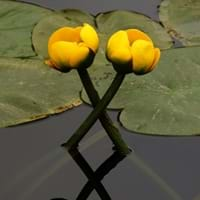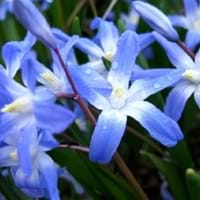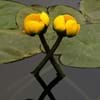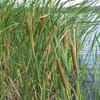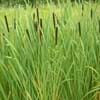Life Span
Perennial
Perennial
Type
Aquatics
Bulb or Corm or Tuber
Origin
North America
Mediterranean, Turkey
Types
not available
Pale glory-of-the-snow , Cretan glory-of-the-snow , Forbes' glory-of-the-snow , Loch's glory-of-the-snow
Number of Varieties
Not Available
Habitat
canals, Lakes, marshes, Ponds, sloughs, sluggish streams and rivers, springs
Mediterranean region
USDA Hardiness Zone
3-12
3-9
Habit
Clump-Forming
Clump-Forming
Minimum Width
Not Available
Flower Color
Yellow
White, Blue, Pink, Violet
Flower Color Modifier
Not Available
Bicolor
Fruit Color
Non Fruiting Plant
Not Available
Leaf Color in Spring
Green, Dark Green
Green
Leaf Color in Summer
Green, Dark Green
Light Green
Leaf Color in Fall
Green, Dark Green
Several shades of Green
Leaf Color in Winter
Not Available
Light Green
Leaf Shape
Heart-shaped
Long Linear
Plant Season
Spring, Summer, Fall
Spring, Winter
Sunlight
Full Sun, Partial Sun
Full Sun, Partial Sun
Type of Soil
Clay, Loam, Sand
Loam
The pH of Soil
Acidic, Neutral, Alkaline
Acidic, Neutral, Alkaline
Soil Drainage
Poorly Drained
Well drained
Bloom Time
Summer, Late Summer
Early Spring, Late Winter
Tolerances
Wet Site
Drought
Where to Plant?
In Water
Ground, Pot
How to Plant?
Seedlings
Divison, Seedlings
Plant Maintenance
Medium
Medium
Watering Requirements
Plant grows in water
Medium
In Summer
Aquatic Plant
Lots of watering
In Spring
Aquatic Plant
Moderate
In Winter
Aquatic Plant
Average Water
Soil pH
Acidic, Neutral, Alkaline
Acidic, Neutral, Alkaline
Soil Type
Clay, Loam, Sand
Loam
Soil Drainage Capacity
Poorly Drained
Well drained
Sun Exposure
Full Sun, Partial Sun
Full Sun, Partial Sun
Pruning
No pruning needed
Remove damaged leaves, Remove dead branches, Remove dead leaves
Fertilizers
Not Available
All-Purpose Liquid Fertilizer
Pests and Diseases
Aphids, Beetles, China Mark Moth, Leaf Rollers, Leeches, Lily Leaf Spot, Mosquito, Muck Midge, Ostracods, Snails, Spider mites, Tadpoles, Whiteflies
Pests and diseases free
Plant Tolerance
Wet Site
Deer resistant, Drought
Flower Petal Number
Single
Single
Foliage Texture
Coarse
Fine
Foliage Sheen
Glossy
Matte
Attracts
Not Available
Butterflies
Allergy
Not Available
Unknown
Aesthetic Uses
Showy Purposes
along a porch, deck or patio, Cottage Garden, Mixed Border, Showy Purposes
Beauty Benefits
Not Available
Not Available
Environmental Uses
Ethnobotanic, Wildlife
Air purification
Medicinal Uses
Anaphrodisiac, Anodyne, Antiscrophulatic, Antispasmodic, Astringent, Cardiotonic, Demulcent, Hypotensive, Sedative, Vasoconstrictor
Unknown
Part of Plant Used
Flowers, Root
Not Available
Other Uses
Used As Food, Used as Ornamental plant
Unknown
Used As Indoor Plant
No
No
Used As Outdoor Plant
Yes
Yes
Garden Design
Water Gardens
Alpine, Container, Foundation, Lawns and Turf, Mixed Border, Rock Garden / Wall, Wildflower
Botanical Name
NUPHAR lutea
CHIONODOXA
Common Name
Common Spatterdock, Yellow Pond Lily
Chionodoxa, Glory-of-the-Snow
In Hindi
पीला तालाब लिली
Chionodoxa
In German
Gelbe Teichrose
Ruhm des Schnees
In French
Jaune nénuphar
gloire de la neige
In Spanish
Lirio amarillo estanque
gloria de la nieve
In Greek
Κίτρινο λίμνη κρίνος
glory-of-the-snow
In Portuguese
Lagoa do lírio amarelo
glória da neve
In Polish
Żółty staw lilii
chwała śniegu
In Latin
Yellow piscinam lilium
glory of the snow
Phylum
Magnoliophyta
Vascular plant
Class
Liliopsida
Liliopsida
Order
Nymphaeales
Asparagales
Family
Nymphaeaceae
Liliaceae
Clade
Angiosperms
Angiosperms, Monocots
Tribe
Not Available
Not Available
Subfamily
Not Available
Scilloideae
Number of Species
Not Available
Properties of Yellow Pond Lily and Glory of the Snow
Wondering what are the properties of Yellow Pond Lily and Glory of the Snow? We provide you with everything About Yellow Pond Lily and Glory of the Snow. Yellow Pond Lily doesn't have thorns and Glory of the Snow doesn't have thorns. Also Yellow Pond Lily does not have fragrant flowers. Yellow Pond Lily has allergic reactions like Not Available and Glory of the Snow has allergic reactions like Not Available. Compare all the properties and characteristics of these two plants. Find out which of these plant can be used as indoor plant. If you are interested to decorate your house and garden, find out aesthetic uses, compare them and select the plant which will beautify your surrounding. Along with beautification, try comparing medicinal and edible uses of Yellow Pond Lily and Glory of the Snow and you can choose the plant having best and most benefits.
Season and Care of Yellow Pond Lily and Glory of the Snow
Season and care of Yellow Pond Lily and Glory of the Snow is important to know. While considering everything about Yellow Pond Lily and Glory of the Snow Care, growing season is an essential factor. Yellow Pond Lily season is Spring, Summer and Fall and Glory of the Snow season is Spring, Summer and Fall. The type of soil for Yellow Pond Lily is Clay, Loam, Sand and for Glory of the Snow is Loam while the PH of soil for Yellow Pond Lily is Acidic, Neutral, Alkaline and for Glory of the Snow is Acidic, Neutral, Alkaline.
Yellow Pond Lily and Glory of the Snow Physical Information
Yellow Pond Lily and Glory of the Snow physical information is very important for comparison. Yellow Pond Lily height is 30.00 cm and width Not Available whereas Glory of the Snow height is 10.20 cm and width 5.10 cm. The color specification of Yellow Pond Lily and Glory of the Snow are as follows:
Yellow Pond Lily flower color: Yellow
Yellow Pond Lily leaf color: Green and Dark Green
Glory of the Snow flower color: White, Blue, Pink and Violet
- Glory of the Snow leaf color: Green
Care of Yellow Pond Lily and Glory of the Snow
Care of Yellow Pond Lily and Glory of the Snow include pruning, fertilizers, watering etc. Yellow Pond Lily pruning is done No pruning needed and Glory of the Snow pruning is done Remove damaged leaves, Remove dead branches and Remove dead leaves. In summer Yellow Pond Lily needs Aquatic Plant and in winter, it needs Aquatic Plant. Whereas, in summer Glory of the Snow needs Lots of watering and in winter, it needs Average Water.
